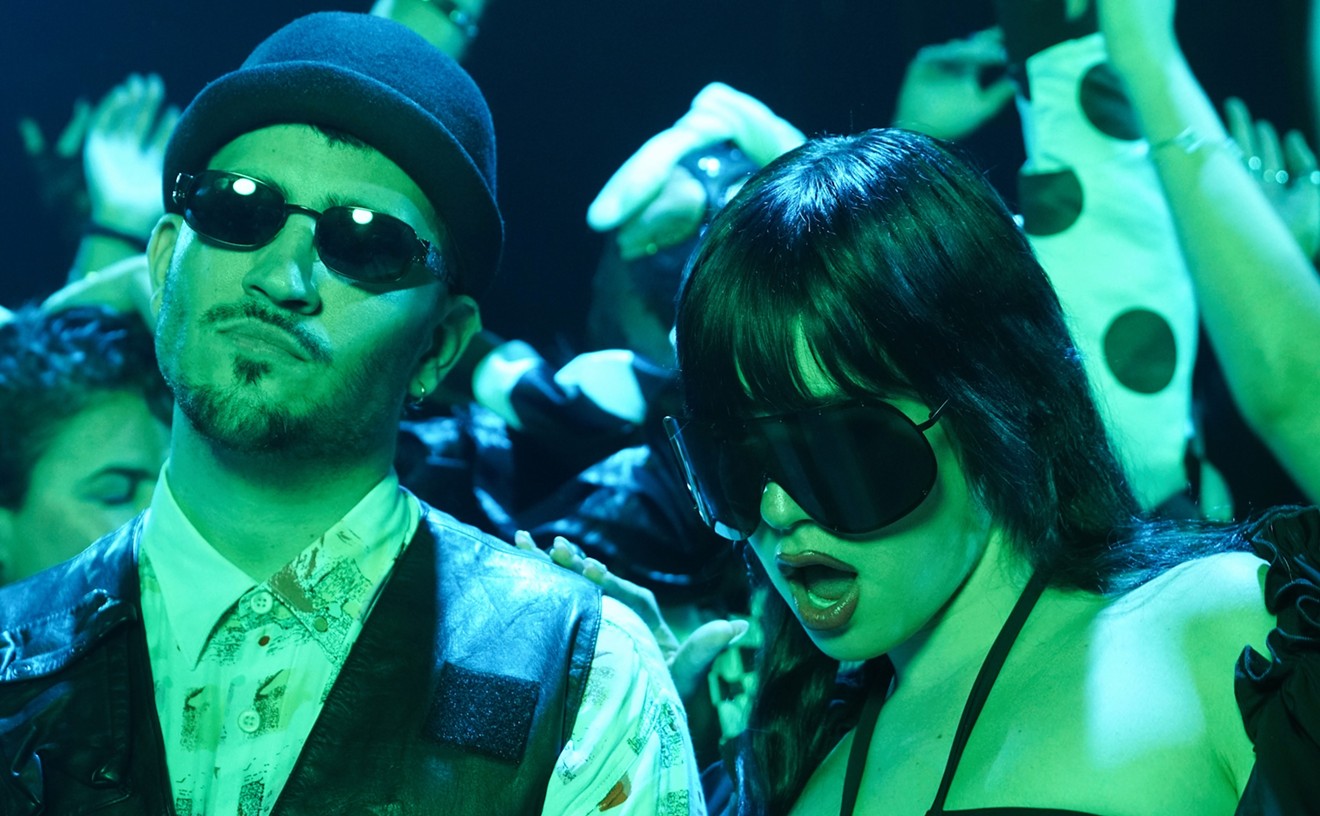Called "one of the most spellbinding voices to grace the world music scene" by Billboard magazine, Downs, with her unique blend of boleros, rancheras, and cumbias with jazz, pop, and hip-hop, is garnering an ever-increasing audience. Since March, she has performed more than 100 concerts in the U.S., Europe, and Latin America. Although she sings primarily in Spanish, her fan base is becoming more diverse: "Different kinds of music bring different audiences," she says. Yet one of her trademarks is the ability to remain true to her origins, whether she's playing at the Kennedy Center or for migrant workers in Homestead.
"I watched the Academy Awards just to see Lila," says Michelle Heffner Hayes, executive director of Miami Dade College's Department of Cultural Affairs. "I was nervous for her and curious to see how an artist as genuine as Lila would be portrayed. To my relief she wasn't wearing a designer gown," she laughs. "She had on the traditional huipil [a native Meso-American sleeveless tunic] that she always wears and, amazingly, she was as luminous on television as she is live."
Downs first learned to sing with sentimiento from her mother, a Mixtec Indian woman who left her small town at nineteen to sing in the cantinas of Mexico City. Her father, an Anglo-American biologist and painter from Minnesota, turned her on to Woody Guthrie. It's no surprise, then, to find on her third and most recent album, 2001's Border (Narada World), a rendition of "This Land is Your Land" jazzed up with electric guitar riffs, followed by "La Linea" ("The Line"), a tune that criticizes NAFTA to a swaggering reggae rhythm accompanied by South American percussion. This subtle fusion reminds one of a time when world music was not just a marketing ploy for record companies to target mainstream listeners but a sound forged from cross-cultural relationships. "We like to work with people who have a great variety of style and a strong color to their playing," she explains. Her current band includes a bassist from Cuba, a Mexican harpist, a Chilean percussionist, a Brazilian guitarist, and her husband, jazz musician Paul Cohen, on sax and piano.
Cohen, a New Jersey native and former comic juggler who met Downs in Oaxaca in the mid-Nineties, also devises the group's sophisticated arrangements. "Paul has a jazz background, so he works a lot with the harmonization of the various instruments," she says. Jazz is a prominent part of the composition process, which is largely based on collaboration and improvisation. "It takes a long time to mature a song," she explains. "On our latest CD, Una Sangre [One Blood], we are working with a form from the north of Chile called cumbia nordina. Each musician brings in his interpretation of that form through his instrument and of course his own cultural background."
But her three-octave-range voice is her greatest treasure. In one song, "El Bracero Fracasado" ("The Failed Bracero"), she captures the bouncy, frivolous muchacha linda of a Mexican ranchera. In the next, "La Martiniana," she's a diva belting out a heartbreaking bolero in a deep-throated voice. This, combined with her uncanny resemblance to Mexican painter Frida Kahlo, makes her performances truly arresting.
Call it coincidence or sweet justice that Downs's upcoming concert is set on the heels of last week's FTAA meetings in downtown Miami. Her music consistently explores the lives of immigrants. Border is dedicated to Mexican migrants and others who have died crossing the U.S. border, and its lyrics are peopled with narcs, border patrol agents, wetbacks, gringos, and tired underage girls working in la maquiladoras -- border town factories. In Una Sangre, scheduled for release this spring, she draws inspiration from iconic female figures like Mother Jones, Joan of Arc, and La Malinche. Her politically charged lyrics and sense of responsibility fall under the venerable tradition of Argentine singer and activist Mercedes Sosa.
"My place is to say things that maybe people don't want to see or hear or talk about," says Downs. She adds that people may be ready for that kind of critical look at the world. "We're filling the theaters, which is interesting because people know the issues that I sing about. I think it's a myth that to be anti-policy or critical is not American. It's very North American and I will continue to be that way until I get older and perform boleros."










